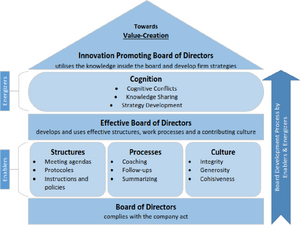Course Overview
Managing Difficult Individuals at Work Training teaches you how to interact successfully with people whom you can’t stand and who are a hassle to within the business in society. This course teaches you how to influence and subtly manipulate challenging individuals to get them to work for you.
Managing Difficult Individuals at Work Training enables you to identify key areas on which you should concentrate to address your personnel preorder to accomplish that, we’ll explain the most prevalent undesirable habits and their origins, and then we’ll assist you in comprehending why people engage in those activities.
People can be made to cooperate with you or for you if you understand their causes and the reasons behind their resistance.
People are said to work for roughly 90,000 hours in their lifetime, or about one-third of their time. At work, we spend a lot of time with the same people, therefore there will inevitably be some interpersonal conflicts. But that’s not the same as having to deal with problematic individuals all the time. In fact, on very stressful days, you could feel that you would rather consume a glass of water than have to work with someone who has “personality issues.”
Don’t try to change them, according to experts. It’s wise to avoid passing judgment on the individuals you must spend a third of your life working with. You have no idea what the challenging person is going through. Maintain perspective when dealing with challenging people and situations. If there isn’t something crucial at risk, don’t waste your time attempting to persuade or alter someone who has a bad attitude. The most important thing is to avoid letting someone else’s words or delivery stop you from advancing a crucial topic.
The first step in dealing with difficult people at work is having effective communication. To endure challenging individuals, communication is a talent that must be learned, just like everything else. You can develop your communication skills by taking a course on how to deal with people.
To truly absorb something, you must first develop active listening skills. Effective speaking is equally as important as listening. You must communicate clearly to stand. Training on dealing with challenge Training duals teaches you how to speak and listen clearly. You will be able to regulate challenging events and challenging people’s behaviors once you learn such vital skills as a communication habit.
To habits, we assist you in identifying the most prevalent challenging behaviors and then instruct you in the most effective strategies for handling each of these behaviors.



Course Objectives
- Recognize challenging behaviors
- Determine the causes of the undesirable actions
- Decipher challenging people
- their listening abilities to achieve a deeper knowledge
- hone their communication abilities to be heard
- Communicate with tough people acceptably and successfully.
- Use strategies and remedies that are appropriate for each undesirable habit.
- not allowing problematic individuals or undesirable activities to take control of the circumstances
- Take charge of the situation and persuade challenging individuals to cooperate
Management & Supervisory Training Highlights
Training Feedback
Happy Customers
Course Outline
Lesson 1: Introduction to Dealing with Difficult People
- What is a difficult person?
- Identify the most undesirable behaviors
- Determine the causes of these actions.
Lesson 2: Realize four intentions
- Do it now.
- rectify it
- Get along, get respect
- Recognize the threatening purpose
- minimize differences
Lesson 3: Communication Skills
- genuine hearing
- Listen to comprehend
- Gain a better comprehension
- Effective communication
Lesson 4: “Speak to be understood”: “Win the Sherman Tank”
- Take a stand for yourself.
- Apply names
- Backpedal
- Aim the camera and fire
- Give them the last say.
Lesson 5: Take down the sniper
- Shut up, be calm, and turn around.
- Identify the covert attackers.
- Apply the battlefield approach
Lesson 6: Dealing with the “Know-it-all”
- Retract a bit and give them some appreciation.
- Request more information
- Describe the events and records.
- Keep the shame to yourself.
- When they merit it, give them credit.
Lesson 7: Control the Exploder
- Use names; be merciful.
- Do not add to the explosion.
Lesson 8: Dealing with the Extremely Agreeable
- Make them a sense of secure
- esteem their dedication
Lesson 9: Keep them close to your friends
- Disarm the Doubter
- Do not try to persuade.
- Be wise with them.
- Respect them rather than push them.
Lesson 10: Enlist the Hesitant, the Ditherer, and the Indecisive
- Be patient and take your time.
- Pose insightful queries
- Use humor
- Step into their shoes.
- Make them conscious of the impact of their behavior
Lesson 11: Dealing with the Complainer
- Look for the most common grievances
- Initiate the discussion
- Engage them in problem-solving activities
- If they continue to act in this way, shut them down.
Who Should Attend
- Senior marketing directors or managers
- Relationship managers and
- Customer relationship managers
- Professionals in customer service, supervisors,
- Team leaders, and managers
- Sales experts, salespeople, and sales analysts
- Entrepreneurs and founders of startups
Trainers Available for:
- In-House Trainings
- Online Training
- 2 Hours Crush Program
- Half Day Program
- One Day Program
- Two Days Full Program
Training Techniques
- Power point Presentations
- Engaging conversations
- Case studies
- Exercises in solving problems
- Focus Group Conversations
- Games in Management
- Skits and modeling the part
Request a Quote

